University of Portsmouth
Type of resources
Topics
Keywords
Contact for the resource
Provided by
Years
Formats
Representation types
Update frequencies
Resolution
-
Data comprise results of laboratory experiments assessing the impacts of beta radiation (phosphorus-32) on reproduction, development and DNA damage in a marine and freshwater crustacean species. All crustacean samples were collected either from Lock Lake, Portsmouth (marine crustacean Echinogammarus marinus) or from the River Ems, Emsworth (freshwater crustacean, Gammarus pulex). Laboratory experiments were conducted periodically from summer 2015 to autumn 2016 at the University of Portsmouth. The data are of use in elucidating the mechanisms and effects of low-dose ionising radiation on an important group of model organisms in radioecology. Full details about this dataset can be found at https://doi.org/10.5285/b70afb8f-0a2b-40e6-aecc-ce484256bbfb
-
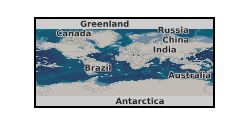
Text data capturing pore fluid pressures (upstream and downstream), axial stress, axial and radial displacement were conditioned and logged by a high-speed data acquisition unit (NI-DAQ 6341) recording data at 10kHz. Two additional cantilever-type radial strain probes are attached directly to the sample at 90 degrees to each other, with an average output calculated via sqrt[(rA2 + rB2)], where rA and rB are the two radial outputs, to monitor an average radial strain and crack opening displacement.
-
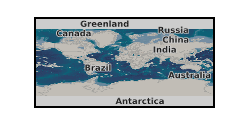
A number of processes, both natural and anthropogenic, involve the fracture of rocks subjected to tensile stress, including vein growth and mineralization, and the extraction of hydrocarbons through hydraulic fracturing. In each case, the fundamental material property of mode-I fracture toughness must be overcome in order for a tensile fracture to nucleate and propagate. Whilst measuring this parameter is straightforward at ambient pressure, estimating the fracture toughness of rocks at depth, where they experience a confining pressure, is technically challenging. Here, we report a new analysis combining results from standard thick-walled cylinder burst tests with quantitative acoustic emission to estimate the mode-I fracture toughness (KIc) of Nash Point Shale at elevated confining pressure, simulating in-situ conditions to approximately 1km. In the most favorable orientation, the pressure required to fracture the rock shell (injection pressure, Pinj) increases from 6.1 MPa at 2.2 MPa confining pressure (PC), to 34 MPa at 20 MPa confining pressure. When fractures cross the shale bedding, the required injection pressures are 30.3 MPa (at Pc = 4.5 MPa) and 58 MPa (at Pc = 20 MPa), respectively. Applying the model of Abou-Sayed (1978) to estimate initial flaw size, we calculate that this pressure increase equates to an increase in KIc from 0.6 MPa.m1/2 at 3.2 MPa differential pressure (Pinj - PC) to 4.1 MPa.m1/2 at 22 MPa differential pressure. We conclude that the increasing pressure due to depth in the Earth will have a significant influence on fracture toughness, which is also a function of the inherent anisotropy.
-
Data set presents results from fish biometry field work within four lakes in Japan (Suzuuchi, Funazawa, Kashiramori, Abakuma). Data comprise sampling location, fish species, sex, length, weight (total fish, gonad and liver weight). Fish were sampled during May 2017; target species included crucian carp, common carp and smallmouth bass. For the health and reproductive status assessment, fish of similar weight and total length were collected. Gill nets (20 m length and 21 mm mesh size) were employed to ensure capture of homogeneous groups of mature fish. The work described here was conducted under the TREE project (http://tree.ceh.ac.uk/) funded by the Natural Environment Research Council, Environment Agency and Radioactive Waste Management Ltd. Full details about this dataset can be found at https://doi.org/10.5285/07347484-5d35-4335-bdbe-ac9d7b33c84f
-
Data comprise water chemistry measurements (major alkali and alkali-earth element water concentrations and trace element concentrations) recorded over two years at seven lakes in Belarus and Ukraine at distances from 1.5 to 225 km of the Chernobyl Nuclear Power Plant (CNPP). The lakes include Glubokoye, Yanovsky lakes and Cooling Pond (high (H) contaminated lakes), Svyatoye Lake (medium (M) contaminated lake) and Stoyacheye, Dvoriche and Gorova lakes (low (L) contaminated lakes). Full details about this dataset can be found at https://doi.org/10.5285/b29d8ab8-9aa7-4f63-a03d-4ed176c32bf3
-
Data comprise health, reproductive status and relative abundance of mature perch and roach collected in September 2014, March 2015, June 2015 and September 2015 from lakes in Belarus and Ukraine. Measurements presented include age, weight, length, presence of external signs of disease and presence of macroscopic tumors. The Fulton condition index (K), hepatosomatic index (HSI) and gonadosomatic index (GSI) of fish are also presented. The lakes (selected according to hydrological properties and long-term exposure to a gradient of radiation dose) are situated at distances from 1.5 to 225 km of the Chernobyl NPP. Glubokoye, Yanovsky lakes and Cooling Pond are the high (H) contaminated lakes, Svyatoye Lake is a medium (M) contaminated lake, and Stoyacheye, Dvoriche and Gorova lakes are the low (L) contaminated lakes. Full details about this dataset can be found at https://doi.org/10.5285/02a53248-1bfd-4f1e-8f76-888551635c98
-
This dataset contains morphological data from the isopod crustacean, Asellus aquaticus collected from Chernobyl affected areas of Belarus and Ukraine in 2015. This data was collected to calculate fluctuating asymmetry, a measure of developmental stability, in organisms along a gradient of radiation contamination. Five different morphological characters were measured and fluctuating asymmetry (right side minus left side) was calculated. Fluctuating asymmetry was calculated here as FA2: [|R-L|/(R+L)/2)] where R and L represent measurements in micrometres for right and left sides of the five morphological characters. Number of segments represents raw right minus left data for the number of antennal segments and is thus provided in a separate column. All data provided are means of two independent measurements. In addition, a measure of environmental factors and total dose rates are also provided in this dataset. Blank cells indicate where no data was available. Full details about this dataset can be found at https://doi.org/10.5285/47f036c4-e319-4825-9cb8-f27977eb20dd
-
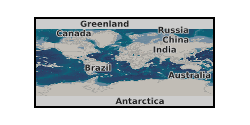
Earth is a dynamic planet, for the simple reason that it is still cooling down from the heat of accretion and subsequent decay of radioactive elements. The main mechanism by which it loses heat is plate tectonics, a theory that has been widely accepted since the 1970s. The Earth is formed of a dense metallic core surrounded by a partially molten silicate mantle which itself is capped by a buoyant crust, either continental or oceanic. We live on the continental crust which largely exists above sea level. The ocean crust forms the floors of oceans and is only rarely exposed. The ocean crust forms by mantle melting at mid ocean ridges, such as the mid Atlantic ridge upon which sits the volcanic island of Iceland. New crust is constantly formed, forcing the older crust to spread outwards and oceans to grow larger. As the ocean crust spreads away from the ridge, it cools and becomes denser. Eventually it interacts with a continent, made of less dense material. The ocean crust is driven beneath the continent back into the mantle, a process known as subduction. Volcanoes form along the continental margin above the subduction zone and at least some of this activity results in addition of new continental crust. This may have been the main process responsible for initial formation and subsequent evolution of our continents. It can be observed now around the margin of the Pacific Ocean, where widespread volcanism is known as the "Ring of Fire". However, not all oceans can continue to grow! The Atlantic Ocean has stopped getting bigger as a response to the continued growth of the Pacific. Eventually, an ocean will close completely and the surrounding continents will collide, resulting in a linear mountain chain. A good example is the Himalaya, where India has collided with Asia. This whole process known as plate tectonics has a profound affect on our planet, providing us with land on which to live, seas in which to fish, freshwater to drink and our complex weather patterns. It is also a regulator of our climate since weathering of continental rocks results in drawdown of CO2 to the deep sea where it is stored. Understanding plate tectonics is central to Earth and Environmental Scientists. There are still important details that we know little about, such as how and when it began. This proposal seeks to investigate this by a novel study of critical rocks that characterise plate tectonics, in particular those that result from subduction. When ocean crust is subducted, increasing pressure and temperature change it into denser rock. As the Earth has evolved, the exact pressure and temperature conditions of this "metamorphism" have also changed. We propose to study this by using minerals that form within ocean crust during subduction. The rocks themselves are often destroyed by erosion, but tiny crystals of a robust mineral called rutile (titanium dioxide) can survive to be found in sediments derived from them. By dating these and using their chemical composition as a fingerprint, we can work out the pressure and temperature within the eroded subduction zone. Similarly, the volcanic rocks that form during subduction have changed through time. These are also often destroyed by erosion so that the exposed record may not be representative. Another robust mineral known as zircon (zirconium silicate) often survives the weathering and ends up alongside rutile in the younger sediments. Using similar methods with zircon we can also investigate changing styles of magmatism throughout Earth's history. . Currently the magmatic record implies that modern subduction began around 2500 million years ago, yet the metamorphic record implies a later start of around 700 million years ago. Our novel approach will test this. We will be able to say whether the younger date is correct and the older marks a different kind of plate tectonics, or whether the older date does indeed represent the onset of modern plate tectonics, and the exposed rock record is biased.
-
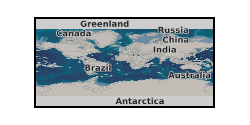
This dataset contains raw experimental triaxial testing data as outlined in "Castagna, A., Ougier‐Simonin, A., Benson, P. M., Browning, J., Walker, R. J., Fazio, M., & Vinciguerra, S. (2018). Thermal damage and pore pressure effects of the Brittle‐Ductile transition in Comiso limestone. Journal of Geophysical Research: Solid Earth, 123(9), 7644-7660.s, http://dx.doi.org/10.1029/2017JB015105". The data is provided in a .zip folder containing the files of 16 experiments that are accompanied by a README file for introduction. Files format is Microsoft Excel Worksheet (.xlsx) and data are tabulated. Each file contains the corresponding relevant sample’s details, and each column of data is clearly labelled, units included. For each experiment, time, radial and axial pumps volume displacements and pressures, top and bottom pore fluid pumps volume displacements and pressures, internal temperature, LVDT signals were recorded. Twenty right cylindrical samples of ‘Comiso’ limestone (Ragusa Formation; Sicily) were tested in triaxial compression at a range of confining pressures simulating depths of 290 m, 620 m, 1.2 km, and 2.0 km respectively, assuming an average density of the over-burden load of 2470 kg/m3. Prior to strength test, each sample was either oven dried (ca. 12 hours at 85 °C followed by cooling in a desiccator for 1 hour) or water saturated (samples in distilled water under vacuum for 24 hours). A subset of these samples has also been thermally treated at 150, 300, 450 and 600oC to induce thermal cracking prior to the mechanical testing. All tests were conducted at 10-5 s-1 axial strain rate in assumed drained conditions when relevant, and at room temperature. For saturated tests, the initial loading was applied in two steps, first by increasing Pc hydrostatically (σ1=σ2=σ3) until the desired confining pressure was reached, and then introducing pore fluid pressure, as per the functionality of the experimental set-up. The experiments were conducted by Drs A. Castagna, M. Fazio and P. Benson using the Snachez triaxial cell at the Rock Mechanics Laboratory of the University of Portsmouth. All responsible for the collection and initial interpretation of the data. Only 17 experiments are reported in this set of data; the missing 3 datasets are believed to be only available on the local computer storage of the triaxial apparatus used at that time.
-
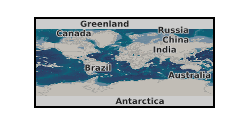
These data represent a series of analyses exploring the seismic behaviours of low-cohesion volcanic sediments – in this case the Neapolitan Yellow Tuff - under varying strain rates. The data include deformation logs from triaxial compression experiments, and the accompanying 12-channel acoustic emission recordings at 10 MHz. These are paired with X-Ray Computed Tomography images of one of the cores from both before and after deformation, to examine damage behaviour. These data include: Deformation logs captured from the triaxial press Acoustic emission event data Processed acoustic emission sonograms for selected events Matlab code for processing of sonograms Matlab code for statistical analysis of the acoustic emission data Before and after X-Ray Computed tomography data for a core which underwent 2% strain at a rate of 4x10-6 s-1. These data relate to Rowley et al - Deformation controlled Long-Period seismicity in low cohesion volcanic sediments https://doi.org/10.31223/osf.io/7rkzv
 NERC Data Catalogue Service
NERC Data Catalogue Service